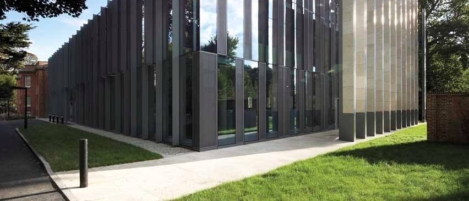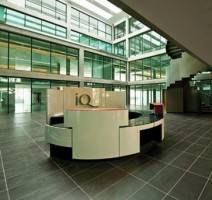February 15, 2016
UK commercial buildings emit far more carbon than they were designed to 0
 Commercial buildings in the UK may be producing an average of 3.8 times more carbon than the estimate presented at their design stage, according to research from InnovateUK. The study examined six years of data from Innovate UK’s Building Performance Evaluation (BPE) Programme. It found that only one of the 48 buildings studied produced the amount of carbon specified by its design. In some cases, total emissions were 10 times the rate calculated for Part L compliance. ‘Building Performance Evaluation Programme: Findings From Non-Domestic Projects’, identifies complex energy controls and building management systems (BMS) as significant factors in poor levels of carbon emissions, suggesting that they should be simplified. Although two-thirds of the buildings studied employed renewable energy, a significant proportion of these experienced problems that had a negative impact on their energy consumption and carbon emissions.
Commercial buildings in the UK may be producing an average of 3.8 times more carbon than the estimate presented at their design stage, according to research from InnovateUK. The study examined six years of data from Innovate UK’s Building Performance Evaluation (BPE) Programme. It found that only one of the 48 buildings studied produced the amount of carbon specified by its design. In some cases, total emissions were 10 times the rate calculated for Part L compliance. ‘Building Performance Evaluation Programme: Findings From Non-Domestic Projects’, identifies complex energy controls and building management systems (BMS) as significant factors in poor levels of carbon emissions, suggesting that they should be simplified. Although two-thirds of the buildings studied employed renewable energy, a significant proportion of these experienced problems that had a negative impact on their energy consumption and carbon emissions.


















 Investment in
Investment in 
 The commercial property markets in the world’s major cities are evolving against a backdrop of ongoing economic and political uncertainty, according to
The commercial property markets in the world’s major cities are evolving against a backdrop of ongoing economic and political uncertainty, according to 


 The recent growth in prime headline office rents has continued across the UK’s regional
The recent growth in prime headline office rents has continued across the UK’s regional 









February 5, 2016
What the commercial property market tells us about trends in office design 0
by Paul Goodchild • Comment, Property, Workplace design
It’s become commonplace in recent years for certain people to foresee the death of the office. The problem with this argument is that, in spite of its drawbacks, office life maintains an attraction for both employers and employees and there will always be an upper limit on how long people want to spend away from other people. Things are changing but the death of the office is a myth. As we’ve known for at least a quarter of a century, there is no absolute need for us to go to work at all. Theoretically we could just do away with offices completely if we wanted to. But as we have seen, the fact we have evolved technology to the point where we could forget about bricks and mortar, doesn’t necessarily mean we will. Not only are there practical reasons for offices to continue to exist, there are emotive ones too. If you want evidence of this, look no further than the records currently being set by the UK’s commercial property markets.
More →